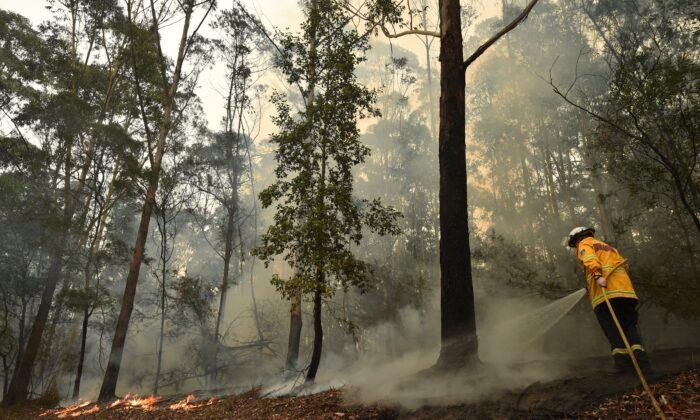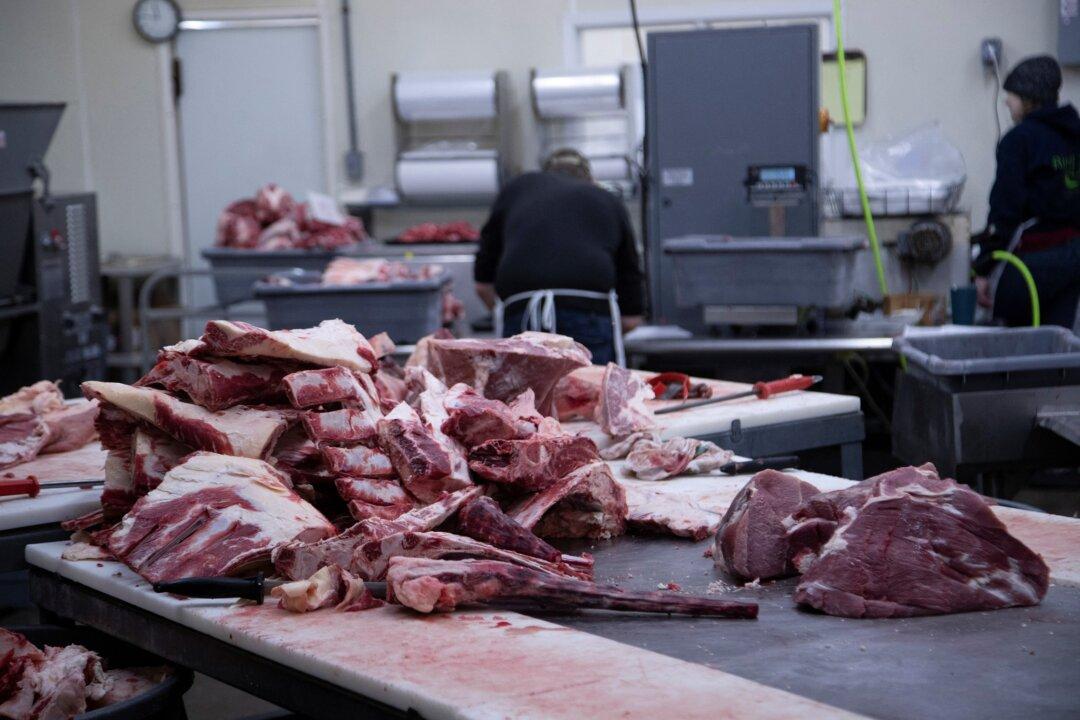SYDNEY—Australian authorities began assessing the damage on Jan. 5 from heatwave-spurred bushfires that swept through two states a day earlier, as cooler conditions provided a temporary respite from blazes that have scarred the country’s east coast for weeks.
Light rain and cooler temperatures in the southeast of the country were a welcome change from the searing heat that has fueled the devastating fires, but officials warned they were not enough to put out almost 200 fires still burning.
“It certainly is a welcome reprieve, it is psychological relief if nothing else,” New South Wales (NSW) state Rural Fire Service Commissioner Shane Fitzsimmons said in an afternoon briefing on the situation. “But unfortunately it is not putting out the fires.”
Tens of thousands of homes in both NSW and Victoria states were without power on Jan. 5 as a large-scale military and police effort continued to provide supplies and evacuate thousands of people who have been trapped for days in coastal towns by the fires.
Fire officials said temperatures were expected to rise again during the week, and the next major flashpoint would come by Jan. 9, but it was too early to gauge the likely severity of the threat.
“It’s not something we have experienced before,” New South Wales Premier Gladys Berejiklian said.
“The weather activity we’re seeing, the extent and spread of the fires, the speed at which they’re going, the way in which they are attacking communities who have never ever seen fire before is unprecedented.”
Thousands of people have been evacuated from coastal towns at the peak of the summer holiday season, in one of the biggest coordinated operations since the evacuation of Darwin after Cyclone Tracy flattened the northern city in 1974.
Prime Minister Scott Morrison said Singapore and Papua New Guinea have made offers of military support; New Zealand was sending an additional three Air Force helicopters and crews, two Army Combat Engineer Sections and a command element to support Australian Defense efforts.
As the smoke cleared, about 350 people were due to be airlifted out of the Victorian town of Mallacoota on Jan. 5, where around 1,000 people were evacuated by sea on Jan. 3. That would leave about 400 people who had chosen to stay in the community, The Age newspaper reported.
As dawn broke over a blackened landscape Jan. 5, a picture emerged of a disaster of unprecedented scale. The New South Wales Rural Fire Service said 150 fires were active in the state, 64 of them uncontrolled.
The wildfires have so far scorched an area twice the size of the U.S. state of Maryland, stretching across Australia’s southeast quadrant, its most densely populated.
In New South Wales alone, the fires have killed nearly 500 million birds, reptiles, and mammals, Sydney University ecologist Chris Dickman told the Sydney Morning Herald.
Australians know to expect summer wildfires. But the blazes arrived early this year, fed by drought and the country’s hottest and driest year on record.
Thousands of firefighters fought to contain the blazes, but many fires continued to burn out of control, threatening to wipe out rural townships and causing almost incalculable damage to property and wildlife.
On Jan. 4, a father and son who were battling flames for two days died on a highway on Kangaroo Island, off South Australia state. Authorities identified them as Dick Lang, a 78-year-old acclaimed bush pilot and outback safari operator, and his 43-year-old son, Clayton. Their family said their losses left them “heartbroken and reeling from this double tragedy.”
Lang, known as “Desert Dick,” led tours for travelers throughout Australia and other countries.
Meanwhile, Australia’s capital, Canberra, was enveloped in a smoky haze Jan. 5, and air quality at midday was measured at 10 times the usual hazardous limit.
In New Zealand, the skies above Auckland were tinged orange by smoke from the bushfires and police were inundated with calls from anxious residents.





